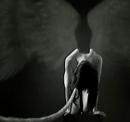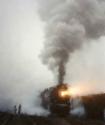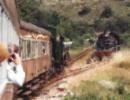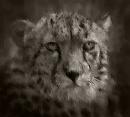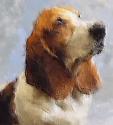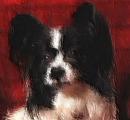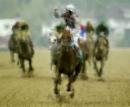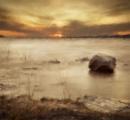Recognition of unities and similarities: Rhythms and analogues, differences The character of space The definition of space The penetration of things into space The nature of illumination It's determination of what we see (as opposed to what we know by vision from a static point in
(space) The way our reading of experience is controlled by the means by which we perceive.The thing any scientist discovers is beyond the reach of direct observation. We can not see energy, attraction of gravity, flying molecules of gases, luminiference ether, nor the
explosions in nerve cells. It is only the premises of science, not its conclusions which are directly observed. For me, a work must first have a vitality of its own. I do not mean a reflection of the vitality of life, of movement, physical action, risking, dancing figures and so on but that a work can have in it a pent up energy, an intense life of its own, independent of the object it may represent. When a work has this powerful vitality we do not connect the word beauty with it. Beauty in the later Between beauty of expression and power of expression there is the difference of function. The first
aims at pleasing the senses, the second has spiritual vitality, which for me is more moving and goes deeper than the senses. Because a work does not aim at reproducing natural appearances it is not, therefore, an escape from life, but may be a penetration into reality... an expression of the significance of life, a stimulation to greater effort in living. greek or Renaissance sense is not the aim of my sculpture/painting,s.
Biography: Personal Profile
A self motivated Artist and Sculptor with over Twenty years experience in most kinds of art. I have a particular interest in the “Life of Rodin and his works.” Philosophy, science and art differ principally according to their subject-matter and also the means by which they reflect, transform and express it. In a certain sense, art, like philosophy, reflects reality in its relation to man, and depicts man, his spiritual world, and the relations between individuals in their interaction with the world. We live not in a primevally pure world, but in a world that is known and has been transformed, a world where everything has, as it were, been given a "human angle", a world permeated with our attitudes towards it, our needs, ideas, aims, ideals, joys and sufferings, a world that is part of the vortex of our existence. If we were to remove this "human factor" from the world, its sometimes inexpressible, profoundly intimate relationship with man, we should be confronted by a desert of grey infinity, where everything was indifferent to everything else. Nature, considered in isolation from man, is for man simply nothing, an empty abstraction existing in the shadowy world of dehumanised thought.
Senior New Media Designer Web Orientated Designer 1996- 2008
Flash developer
Generator
Director
Achon script 2.0
Animation
Photoshop
3D Programme/ Vector
VRML/Net scape
HTML
Javer
Also conversant with a wide range of desktop packages
360 Vista photography developer
3D Photography
Photography
CD developer developer
IT cards
Game Platform
Freelance Sculptor and painter 1992-present
Work exhibited in the UK and in private collection in Paris, Switzerland and the Unites States
"Where are the components for a theory of art to be found"? I think a first step may be made in recognizing that works of art are representations, not necessarily in the old sense of resembling their subjects, but in the more extended sense that it is always legitimate to ask what they are about. Warhol's boxes were clearly about something, had a content and a meaning, made a statement, even were metaphors of a sort. In a curious way they made some kind of statement about art, and incorporated into their identity the question of what that identity is - and it was Heidegger who proposed that it is a part of the essence of being a human that the question of what one is part of what one is. But nothing remotely like this could be true of a mere soap box. Dances, too, are representational, not simply in the way in which a pair of dancers may dance the dance the characters dance in the action they imitate, but in the same wide sense in which even the most resolutely abstract art has a pictorial dimension.Recognition of unities and similarities: Rhythms and analogues, differences The character of space The definition of space The penetration of things into space The nature of illumination. It's determination of what we see (as opposed to what we know by vision from a static point in(space) The way our reading of experience is controlled by the means by which we perceive.The thing any scientist discovers is beyond the reach of direct observation.We can not see energy, attraction of gravity, flying molecules of gases, luminiference ether, nor the explosions in nerve cells. It is only the premises of science, not its conclusions which are directly observed. For me, a work must first have a vitality of its own. I do not mean a reflection of the vitality of life, of movement, physical action, risking, dancing figures and so on but that a work can have in it a pent up energy, an intense life of its own, independent of the object it may represent. When a work has this powerful vitality we do not connect the word beauty with it. Beauty in the later Between beauty of expression and power of expression there is the difference of function. The first aims at pleasing the senses, the second has spiritual vitality, which for me is more moving and goesdeeper than the senses. Because a work does not aim at reproducing natural appearances it is not, therefore, an escape from life, but may be a penetration into reality... an expression of thesignificance of life, a stimulation to greater effort in living. greek or Renaissance sense is not the aim of my sculpture.
Freelance computer graphics Designer 1990 – 1990
Clients: Systems 7 of London and Cascades of Harrogate
Skills:
Designing Backdrops
Sprites
Bobs
Parallax Scrolling and Animation
Machine Maintenance Engineer Ripon 1980-1990
Practical maintenance
European counterpart liaison
Development training
Qualifications
Degree Course – BA Hons – Fine Art 1992 –1996
Bretton Hall,Wakefield
Modules included: Business, self management, 3D Modelling computer graphics, Theory and Analysis of Virtual reality, Analytical Life Drawing.
Thesis: ‘Inner Space’ - studied the effects of Chaos and Empathy Theory, Mathematical fractionalisation in life, bio rhythms of organisms and applied use in computer graphics.
Design Course BTEC Diploma Harrogate College 1990 – 1992
Modules: Business studies, computer graphics, multi media, design concept, history of art. Work placement – Paul Sowerby Advertising Agency
O level in life drawing 1990
City and Guilds certificate in ‘Delivering Learning’ 2004
Harrogate College
Additional information
DOB: 11/08/1965
Driving License
Interests
My spare time usually consists of creating sculptures, out of various materials.
These usually take the form of figures; I also do drawing for pleasure using pastel chalks.
I have a general love of Art and philosophically.
I have also been involved in photography, which I enjoy greatly.
Finalism is about experiencing paint and sculpture together. Finalism represents a return to solid, tangible art. Applying paint to sculptures or sculpture to paint is not new and can be seen as far back as Egyptian, Greek and Roman art. The weathering of time has removed the paint from sculptures produced during these periods. Finalism is bringing this fine tradition back into the spotlight Finalist artists base their techniques on the traditions of painting and sculpture. Our art stands for permanence and a return to the integrity of the finished art work. We create art with longevity that will survive to be appreciated by future generations.Collectively and as individuals we explore the idea of applying sculpture to paint and paint to sculpture. We focus on the art and development of painting and sculpting skills as the art of Finalism.Finalism is based on an exploration of the lasting elements of painting and sculpture - appearance and form. Our guiding philosophy is from Leonardo da Vinci: "If art becomes more theory than art, then it is no longer art". This joint application of materials has largely been forgotten by art schools today, but if one looks hard enough at the history of art, there are numerous artists who have applied these very principles.Like Michaelangelo we focus on the appearance of sculpture and the form of paintings.
Country: United Kingdom (Great Britain)
E-mail: darrell_jones_art@yahoo.co.uk
Site:





